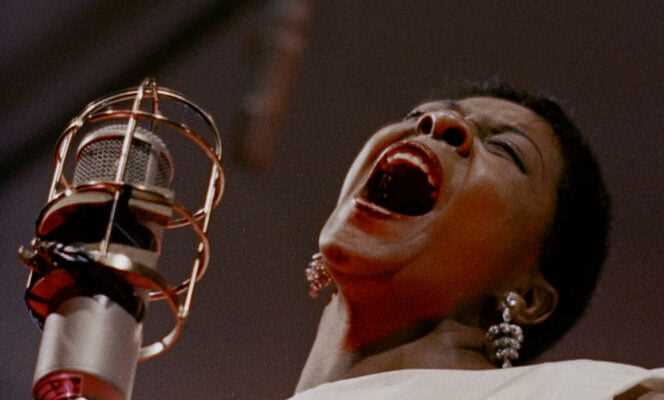This case, since Jazz on a Summer’s Dais re-released there as a Blu-ray disc, contains a dose of euphoria whose effects can last for several hours. Like all industrial-crafted pleasures, this feeling is a little adulterated. Corn Jazz on a Summer’s Day was shot in 1958, and the additives and manufacturing processes of this documentary, the ancestor of all concert films, Woodstock (1970) to Stop Making Sense (1984), have taken on a deliciously old-fashioned flavor over time.
In the summer of 1958, fashion photographer Bert Stern decided to film the fifth edition of the Newport Jazz Festival, in the state of Rhode Island. Are expected, among others, Duke Ellington, Miles Davis, Dave Brubeck, Horace Silver, Ray Charles. None of them will have the honors of the big screen, Bert Stern obviously had other ideas in mind. Taking advantage of the simultaneity between the festival and the America’s Cup qualifiers, he films the yachts speeding across the Atlantic and crosses these images with musical sequences. The process is enchanting (when the music is content with its status as a soundtrack) and sometimes exasperating (when Thelonious Monk, who sports sublime glasses with bamboo frames, begins Monk’s Blues to be immediately drowned in the blue waves, until covering the music with the voice of the commentator of the regatta).
Stern did not refrain from staging entire sequences. The partying beatniks, the dixieland band that roams the streets of Newport on the back of a clunker are there on command. More convincing are the images of Chico Hamilton’s group rehearsal in an overheated, air-conditioned room, which ends with the melancholy performance of the prelude to Bach’s first cello suite, in a cloud of cigarette smoke.
music heights
This celebration of the beginnings of the great liberation to come, which will culminate in 1967 with the Summer of Love, will inspire nostalgia. The sequences filmed on the lawn covered with folding chairs in front of a large white stage which hosted the festival are admirable. Stern’s sense of framing, his attention to a mixed audience (FBI agent-headed guy, hepcat out of a novel by Kerouac, young people from Ivy League universities, pillars of jazz clubs in Harlem…) magnify the music which itself reaches new heights.
The incongruous and charming spectacle of Anita O’Day, wearing a hat, gloved, vocalizing with virtuosity on Sweet Georgia Brown and Tea for Two contrasts perfectly with the intensity of Dinah Washington on All of Me. Big Maybelle, founding mother of rhythm’n’blues, precedes Chuck Berry who, for obscure reasons (perhaps he was already in the habit of going on tour alone, so that no one but him was paid ) interpreter Sweet Little Sixteen with jazz musicians. The piece struggles to take off to end with an astonishing guitar-clarinet duo, undoubtedly unique in the annals of rock’n’roll.
You have 8.94% of this article left to read. The following is for subscribers only.
